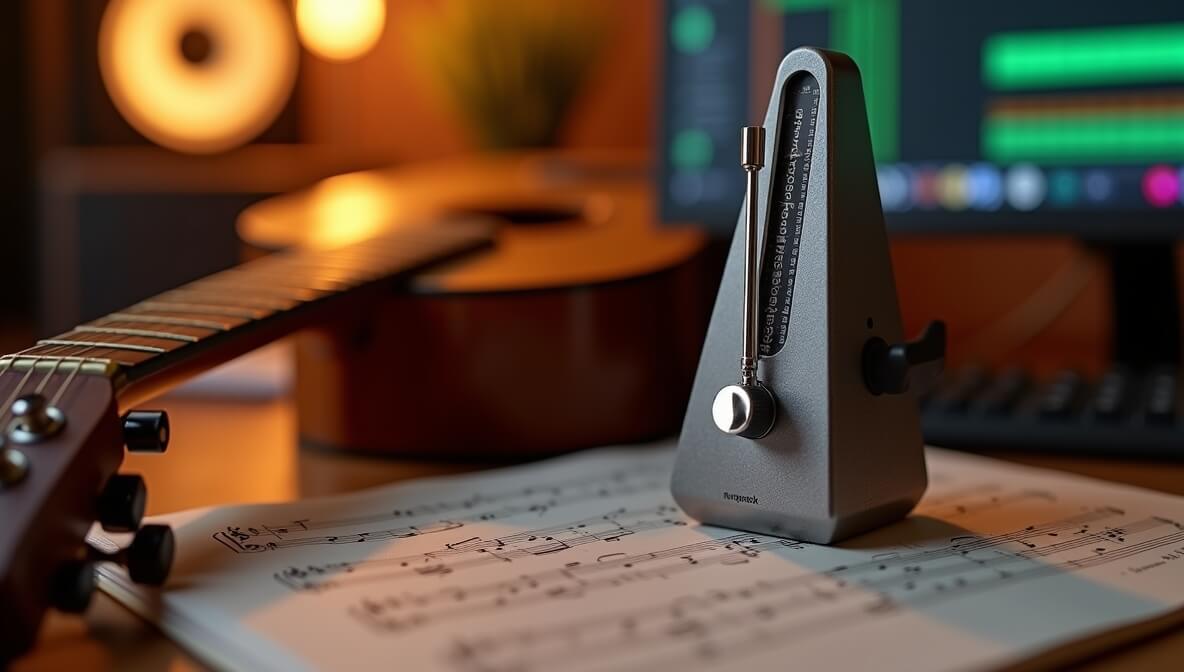Tempo is the heartbeat of a song. It defines how fast or slow the music moves, influencing the song's mood, energy, and overall flow. Whether you're a beginner musician, an aspiring producer, or a seasoned composer, understanding Tempo and BPM (Beats Per Minute) is essential for creating cohesive, engaging music. In this guide, we’ll break down what tempo is, how BPM works, and practical tips for mastering musical timing.
What Is Tempo? Understanding the Pulse of Music
Tempo refers to the speed at which a piece of music is played. It dictates the pace of a song and is one of the most important elements of music, as it helps set the overall mood. For example:
- A slow tempo (such as Largo or Adagio) may evoke feelings of calmness, sadness, or reflection.
- A fast tempo (like Allegro or Presto) can create energy, excitement, and urgency.
The tempo can significantly impact how listeners perceive a song. As a musician, learning to feel and internalize tempo is crucial for playing with precision and emotion. You can improve this skill by practicing with ear training exercises to enhance your ability to identify and match different tempos.
What is BPM (Beats Per Minute)?
BPM is the numerical measurement of tempo. It indicates how many beats occur in one minute of music. Understanding BPM allows musicians to match the tempo with specific tracks and perform accurately.
For example:
- 60 BPM means one beat every second.
- 120 BPM means two beats per second, which is common in many pop and dance songs.
Having an understanding of BPM is essential when playing, composing, or producing music. It helps you stay in sync with other musicians or create cohesive tracks when producing in a Digital Audio Workstation (DAW). To practice with precision, consider using a metronome—an essential tool for any musician. There are many apps and online metronomes, such as Soundbrenner, that help you keep time and ensure you’re playing at the desired BPM.
Tempo Markings in Sheet Music: Common Terms You Should Know
In classical music and many contemporary pieces, tempo markings are used to give performers an idea of the speed at which the piece should be played. Some common tempo markings include:
- Largo (very slow)
- Andante (at a walking pace)
- Allegro (fast and lively)
- Presto (very fast)
As a beginner, you’ll encounter these markings in sheet music. If you’re learning instruments like piano or guitar, understanding these terms and applying them can help you become more fluid with your playing. Resources like unlocking the piano fretboard or beginner guitar exercises can help you grasp tempo while learning scales, chords, and rhythm.
Why Tempo Matters in Music: The Role of Tempo in Mood and Genre
Tempo is not just a technical element—it plays a key role in shaping the emotion and atmosphere of a song. Here's why tempo matters:
- Expressive Control: The tempo you choose can help convey the emotion behind the music. A slow tempo in a ballad creates a different emotional connection than an upbeat pop song.
- Genre Differentiation: Different music genres often use different tempos. For example:
- Ballads (romantic or slow songs) typically use a tempo of 60–80 BPM.
- Pop/Dance music is usually between 100–130 BPM.
- Metal/Hard Rock can range from 140–200 BPM, depending on the intensity.
- Jazz can vary greatly in tempo, often using swing or rubato for expression.
Having a clear understanding of tempo allows musicians and producers to ensure that the music is appropriate for its genre and that the tempo supports the track's mood. To get a better grasp of timing, you can refer to resources like why understanding rhythm is crucial.
Practical Tips for Mastering Tempo
Mastering tempo is essential for playing music accurately and expressively. Here are some practical tips for working with tempo in your practice and performances:
- Start Slow and Build Up Speed: When learning a new piece of music, start at a slower tempo and gradually increase the speed as you get comfortable. This helps improve precision and control, especially when tackling complex passages.
- Use a Metronome: Practicing with a metronome is one of the best ways to improve your timing. It forces you to stay in rhythm, and with consistent practice, you’ll develop a better internal sense of timing. Explore free metronome apps or invest in one for more precise control.
- Experiment with Different BPMs: Try changing the tempo of a song and observe how the energy and mood shift. You can experiment with tempo changes in software such as Ableton Live or FL Studio to see how different speeds affect the track’s overall feel.
- Record Yourself and Compare: Recording yourself at various tempos can help you identify what works best for the song. It will also help you hear and analyze whether the tempo feels natural.
Tempo in Music Production: Digital Control of Tempo
- In modern music production, tempo control is often done digitally through Digital Audio Workstations (DAWs). DAWs like Ableton Live or FL Studio give you full control over tempo adjustments, making it easy to sync tracks or change tempo during a song’s progression.
- Producers also use MIDI (Musical Instrument Digital Interface) to manipulate tempo and timing in real-time. This allows for non-destructive editing and manipulation, giving producers flexibility when composing or arranging music. For a deeper understanding of digital music production, check out The Basics of MIDI.
Conclusion: Mastering Tempo for Musical Excellence
- Understanding tempo and BPM is crucial for musicians, producers, and composers alike. By practicing with metronomes, experimenting with different BPMs, and mastering tempo markings, you’ll enhance your musical timing and expressiveness. Whether you’re performing live, composing, or producing in a studio, your control over tempo will significantly impact the vibe, energy, and emotion of the music.
- For further tips on improving timing, rhythm, and musicality, check out our resource on why understanding rhythm is crucial.
